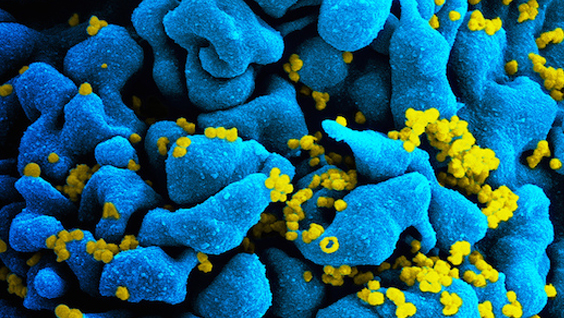This year required dedication, patience and perseverance as we all adjusted to a new normal—and we’re proud that our scientists more than rose to the occasion.
Despite the challenges presented by staggered-shift work and remote communications, our researchers continued to produce scientific insights that lay the foundation for achieving cures.
Read on to learn more about our top 10 discoveries of the year—which includes progress in the fight against COVID-19, insights into treating deadly cancers, research that may help children born with a rare condition, and more.
- Nature study identifies 21 existing drugs that could treat COVID-19
Sumit Chanda, PhD, and his team screened one of the world’s largest drug collections to find compounds that can stop the replication of SARS-CoV-2. This heroic effort was documented by the New York Times, the New York Times Magazine, TIME, NPR and additional outlets—and his team continues to work around the clock to advance these potential treatment options for COVID-19 patients.
- Fruit flies reveal new insights into space travel’s effect on the heart
Wife-and-husband team Karen Ocorr, PhD, and Rolf Bodmer, PhD, shared insights that hold implications for NASA’s plan to build a moon colony by 2024 and send astronauts to Mars.
- Personalized drug screens could guide treatment for children with brain cancer
Robert Wechsler-Reya, PhD, and Jessica Rusert, PhD, demonstrated the power of personalized drug screens for medulloblastoma, the most common malignant brain cancer in children.
- Preventing pancreatic cancer metastasis by keeping cells “sheltered in place”
Cosimo Commisso, PhD, identified druggable targets that hold promise as treatments that stop pancreatic cancer’s deadly spread.
- Prebiotics help mice fight melanoma by activating anti-tumor immunity
Ze’ev Ronai, PhD, showed that two prebiotics, mucin and inulin, slowed the growth of melanoma in mice by boosting the immune system’s ability to fight cancer.
- New test for rare disease identifies children who may benefit from a simple supplement
Hudson Freeze, PhD, helped create a test that determines which children with CAD deficiency—a rare metabolic disease—are likely to benefit from receiving a nutritional supplement that has dramatically improved the lives of other children with the condition.
- Drug guides stem cells to desired location, improving their ability to heal
Evan Snyder, MD, PhD, created the first drug that can lure stem cells to damaged tissue and improve treatment efficacy—a major advance for regenerative medicine.
- Scientists identify a new drug target for dry age-related macular degeneration (AMD)
Francesca Marassi, PhD, showed that the blood protein vitronectin is a promising drug target for dry age-related macular degeneration (AMD), a leading cause of vision loss in Americans 60 years of age and older.
- Scientists uncover a novel approach to treating Duchenne muscular dystrophy
Pier Lorenzo Puri, MD, PhD, collaborated with scientists at Fondazione Santa Lucia IRCCS and Università Cattolica del Sacro Cuore in Rome to show that pharmacological (drug) correction of the content of extracellular vesicles released within dystrophic muscles can restore their ability to regenerate muscle and prevent muscle scarring.
- New drug candidate reawakens sleeping HIV in the hopes of a functional cure
Sumit Chanda, PhD, Nicholas Cosford, PhD, and Lars Pache, PhD, created a next-generation drug called Ciapavir (SBI-0953294) that is effective at reactivating dormant human immunodeficiency virus (HIV)—an approach called “shock and kill.”

